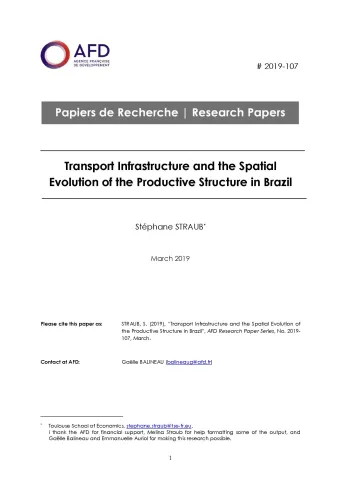Share the page
Transport Infrastructure and the Spatial Evolution of the Productive Structure in Brazil
Published on

This paper analyzes the impact of large scale investments on transport infrastructure on the spatial evolution of the productive structure in Brazil, in particular the industry/service mix. It does so using municipal-level data from the census between 1970 and 2010, a period over which the road network was dramatically expanded. It builds on previous research showing that over this period road access improvements generated a dual geographical pattern, with a growing concentration of population and economic activity in large radiuses of up to several hundred kilometers around the main urban areas in the more developed Southern part of Brazil, and an opposite movement of population and economic activity away from the main urban centers, towards secondary urban centers, around Northern State capitals. Using more disaggregated data on employment in productive sectors, it shows that improvements in long distance road access have changed the structure of the productive sector at different locations, and that the resulting patterns is consistent with previous findings, in the sense that agglomeration effects are mostly driven by increases in secondary and tertiary activities, although the exact nature of the most dynamic sectors depends on whether they are located or not close to some large urban center.
Useful Information
-
Authors
-
Stéphane STRAUB
-
Coordinators
-
Gaëlle BALINEAU
-
Edition
-
107
-
Number of pages
-
22
